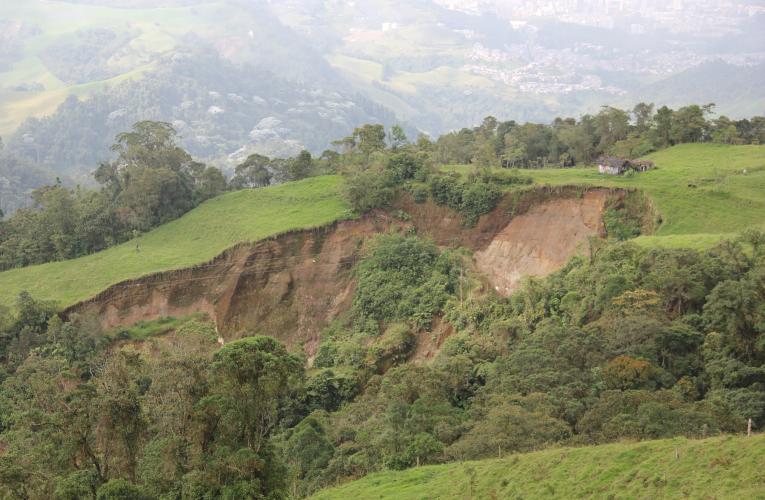By Kati Moore (MEM ’16), Nicholas School Communications Student Assistant
DURHAM, N.C. – In 2011, a landslide in the central Colombian city of Manizales wreaked havoc, killing 45 people and cutting off the city’s water supply for 13 days.
The landslide was partly the result of clearing of land over the last several years for agriculture and cattle grazing. Without trees to filter water and anchor the soil, the especially heavy rains of the 2011 rainy season resulted in disastrous avalanches.
Natalia Ocampo-Peñuela, a PhD student at Duke University’s Nicholas School of the environment, and her advisor Stuart Pimm visited locations in and around Manizales in 2012 while conducting field research in central Colombia for a project on bird conservation in the Andes Mountains.
They saw firsthand how deforestation had contributed to landslides across the region and also destroyed bird habitat in this hotspot of biodiversity.
“When you get there you realize that there’s not very much forest left, and much of it is in pieces,” says Pimm, who is the Doris Duke Professor of Conservation Ecology at the Nicholas School.
Where others saw devastation, Ocampo-Peñuela, who studies bird conservation and how it can influence policy decisions, saw an opportunity.
In 1993 a law was passed in Colombia that required water companies to spend one percent of their annual revenue on watershed protection for the next fifteen years. Despite this, not much had changed by 2012. Signs of successful reclamation and reforestation efforts were few and far between. One problem preventing water companies from taking action, Ocampo-Peñuela realized, may have been that they didn’t know which areas to protect.
Her answer to this problem was to begin working with Aguas de Manizales, the major water provider for the city, to identify which slopes were most prone to landslides and should be classified as top priorities for reforestation that could both protect watersheds and provide habitat for 56 bird species that have small ranges or are only found in the central Andes.
“Our goal was to do ecosystem service conservation with bird conservation at the same time,” she says.
She focused on the Reserva Forestal Protectora de Rio Blanco y Quebrada Olivares, a nature reserve near Manizales owned by the water company. The reserve, in addition to being an important watershed for the city, is a popular destination for birders.
“There are three species of endemic birds that you can only see in this reserve,” she says. “It’s one of the few patches left.”
 |
| Black-billed mountain toucan (Andigena nigrirostris) a genus endemic to the Andes (Photo credit: Natalia Ocampo-Penuela) |
 |
| The endemic brown-banded antpilla (Grallaria milleri). The only reliable place to see this bird is Rio Blanco. (Photo credit: Natalia Ocampo-Penuela) |
She developed a model that predicts the likelihood of a landslide occurring on a certain slope based on amount of forest cover, steepness, and which direction the slope faces. She then overlapped the map produced by this model with a habitat map of birds that are threatened, endemic, or have ranges smaller than 100,000 square kilometers.
The result is a map of high-priority areas that Aguas de Manizales will reforest with the required one percent of their revenue.
Ocampo-Peñuela and Pimm published a paper about their new model, and how it can be used to benefit both humans and birds alike, last month in the open-access peer-reviewed journal PeerJ. You can read it at https://peerj.com/articles/779/.
While the model was designed with the Manizales region in mind, water companies in other areas can also use it to do similar evaluations, she emphasizes. “It’s a very simple model that anyone can use. The idea is that Aguas de Manizales will use it as a pilot study, but it is available to all other water companies.”
The 2011 landslide resulted in a greater political push for water companies to meet the watershed protection requirements, Ocampo-Peñuela notes.
“We hope that with this push, our work will facilitate the investment of this money,” says Pimm. “It’s a matter of working out solutions that are good for everybody.”
###
CITATION: “Bird Conservation Would Complement Landslide Prevention in the Central Andes of Colombia,” by Natalia Ocampo-Peñuela and Stuart L. Pimm; published Feb.19, 2015, in PeerJ. http://dx.doi.org/10.7717/peerj.779
